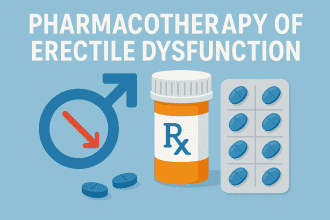Pharmacotherapy of Type 1 Diabetes Mellitus
Introduction Type 1 diabetes mellitus (T1DM) is a complex autoimmune disorder requiring…
Broad spectrum antibiotics – Tetracyclines and Chloramphenicol
Introduction Broad-spectrum antibiotics stand at the forefront of infectious disease management, enabling…
Pharmacotherapy of erectile dysfunction
Introduction Erectile dysfunction (ED), defined as the consistent or recurrent inability to…
Pharmacotherapy of migraine
Introduction Migraine is a debilitating primary headache disorder characterized by episodic attacks…
Pharmacology of Fibrinolytics
Introduction Fibrinolytics—also known as thrombolytics—are a specialized class of pharmacological agents that…
Pharmacology of anticoagulants
Introduction Anticoagulants constitute an essential class of drugs used to inhibit blood coagulation,…
Pharmacology of Antiplatelet Drugs
Introduction Platelets play a pivotal role in hemostasis, forming plugs that stem…
What is Pharmacology? An introduction
1 · Definition & Conceptual Overview Pharmacology is the scientific discipline that…
Pharmacotherapy of Epilepsy
Introduction Epilepsy, a chronic neurological disorder characterized by recurrent seizures, affects millions…
Pharmacotherapy of Peptic Ulcer Disease (PUD)
Introduction Peptic ulcer disease (PUD) encompasses the formation of ulcers in the stomach (gastric ulcer) or duodenum (duodenal…















